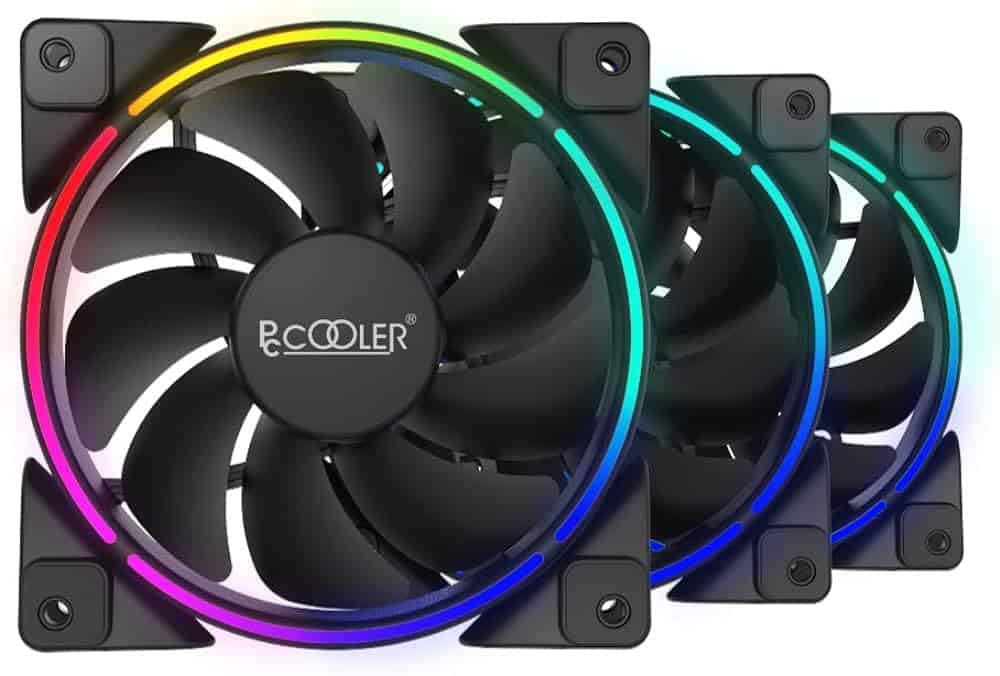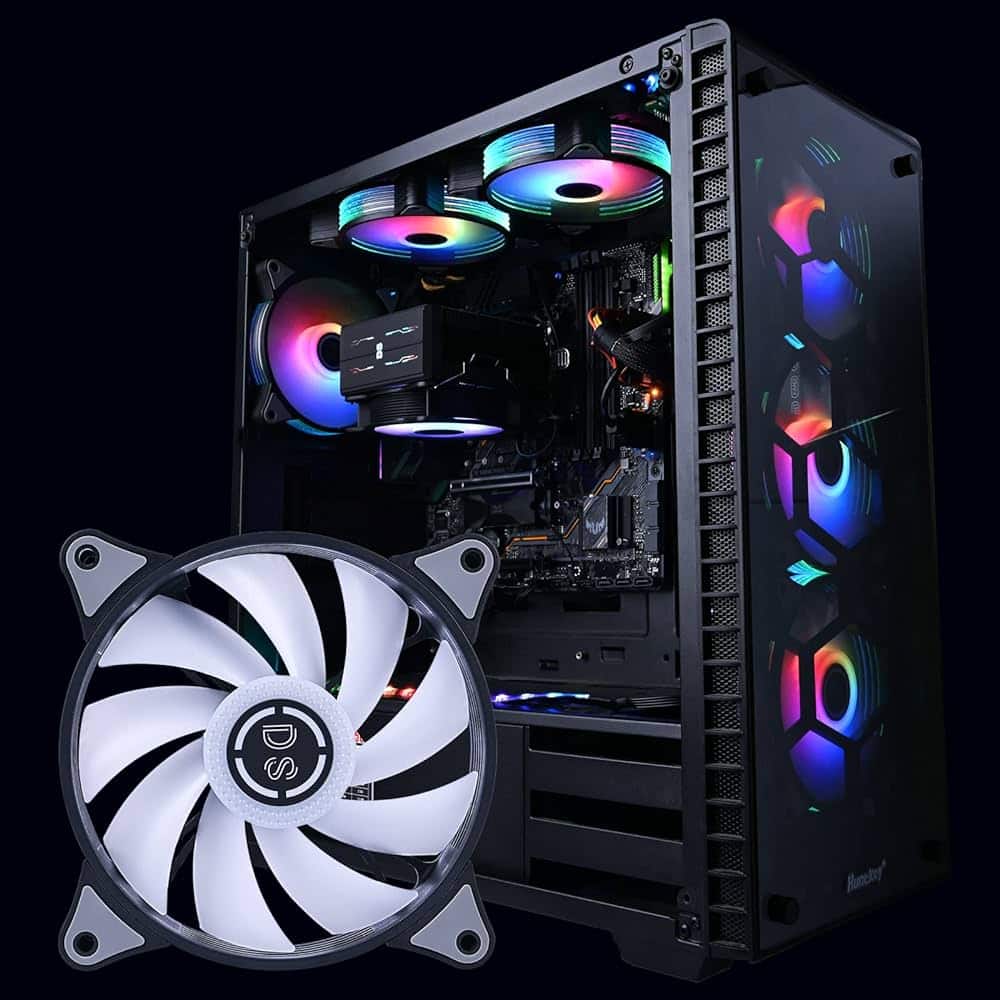Determining the appropriate number of case fans for a computer depends on several factors. Each PC and its components generate heat during operation, and effective cooling is crucial to maintain performance and longevity. A balance is needed between intake and exhaust fans to ensure good airflow. Too few fans can lead to heat build-up, while too many might cause unnecessary noise and increased dust accumulation. The goal is to create a steady stream of air that moves warm air out as cool air comes in. Placement of fans matters, as you’ll often have options to add fans on the front, back, top, and sometimes the bottom and sides of the case. An optimal fan setup aids in cooling all components evenly and prevents hot spots that can damage sensitive parts of the PC, such as the CPU and GPU.
Building the Best Cooling System for Your PC
The ideal number of case fans for your PC depends on various factors. We’ll look at these factors and offer general guidelines to help you make an informed decision.
Factors to Consider
Several factors influence the number of case fans you need:
- Case size: Larger cases typically require more fans to maintain optimal airflow.
- Components: High-performance CPUs and GPUs generate more heat and may need additional cooling.
- Overclocking: If you overclock your components, you’ll need more fans to dissipate the extra heat.
- Ambient temperature: Hotter environments require more fans to maintain safe operating temperatures.
- Personal preference: Some users prefer quieter systems with fewer fans, while others prioritize maximum cooling performance.

General Guidelines
While the optimal number of fans varies, here’s a general guideline to get you started:
| Case Size | Minimum Fans | Recommended Fans |
|---|---|---|
| Mini-ITX | 1-2 | 2-3 |
| Micro-ATX | 2-3 | 3-4 |
| Mid-Tower ATX | 3-4 | 4-5 |
| Full-Tower ATX | 4-5 | 5-6 |
Remember, these are just guidelines. You may need more or fewer fans depending on your specific setup and preferences.
Airflow Direction
The direction of airflow is crucial for effective cooling. Generally, you want to create a balanced airflow with positive pressure. This means having slightly more intake fans (bringing cool air into the case) than exhaust fans (expelling hot air).
Typical Fan Placement
- Front: Intake
- Rear: Exhaust
- Top: Exhaust
- Bottom: Intake (if available)
Additional Tips
- Fan curves: Customize your fan curves to optimize noise levels and cooling performance.
- Cable management: Keep your cables tidy to improve airflow and reduce dust buildup.
- Dust filters: Clean your dust filters regularly to maintain optimal airflow.
- Experiment: Try different fan configurations to find what works best for your system.
Remember, there’s no one-size-fits-all answer to the question of how many case fans you need. By considering the factors mentioned above and experimenting with different configurations, you can find the perfect balance of cooling and noise for your PC.
Key Takeaways
- Balance between intake and exhaust fans improves cooling.
- Steady airflow helps prevent hot spots in the PC.
- Correct fan placement enhances cooling performance.
Optimizing Fan Setup for Efficiency
To keep your computer cool and running smoothly, the right fan setup is key. It’s all about placing the right type and number of fans to move hot air out and pull cool air in without making too much noise.
Determining the Right Number and Type of Fans
The number of fans you need can depend on the size of your PC case and the heat your computer generates. For a gaming PC that works hard and gets hot, more fans can help. You might start with at least two intake fans and one exhaust fan. Larger 140mm fans can move more air at lower revolutions per minute (RPM) than smaller 120mm fans, which can reduce fan noise. Fans are rated by cubic feet per minute (CFM), reflecting how much air they move. Static pressure fans are best for tight spaces where they need to push air through obstacles like a radiator or heat sink.

Balance Between Cooling and Acoustic Control
It’s important to find a middle ground between a cool PC and a quiet one. Larger fans are often quieter because they can move the same amount of air at slower speeds than smaller fans. Running fans slower can also reduce noise. Your PC workload also matters. Normal workloads may not need as many fans as gaming or other high-performance tasks.
Influence of PC Components on Fan Requirements
Components like GPUs and CPUs generate a lot of heat, especially when under heavy use. They need good airflow to stay cool. A PC with a powerful GPU and CPU might need extra fans to ensure enough cool air reaches these parts. Heat also comes from power supplies and VRMs, which regulate the power to your CPU. Even if you have a liquid cooler, fans still play a vital role in moving hot air out of your case and keeping ambient temperature down.
What Does CFM Mean for Fans?
CFM stands for Cubic Feet per Minute. It tells you how much air a fan can move in one minute. Think of it like a water hose – a higher CFM means a bigger hose, pushing more water (or in this case, air) through.
For fans, this is super important! A higher CFM means the fan can cool or ventilate a larger space more effectively. So, if you have a big room, you’ll want a fan with a higher CFM to keep things comfortable.







